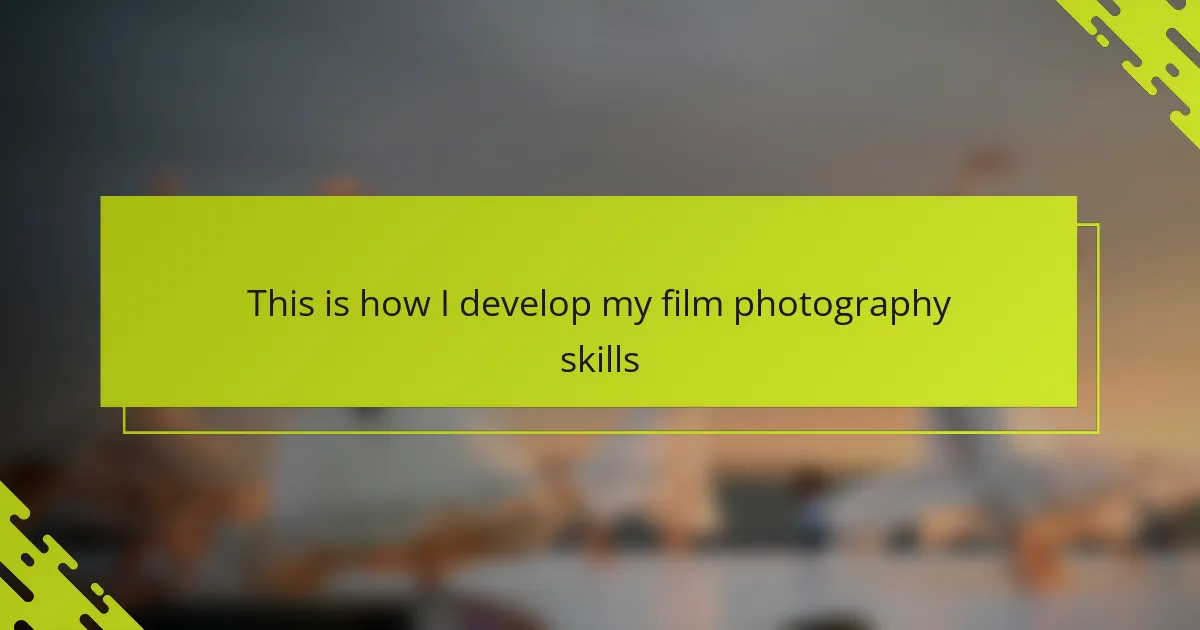Key takeaways
- Understanding film photography fundamentals—light, shutter speed, aperture, and ISO—is essential for creative expression.
- Capturing queer women’s experiences through photography requires sensitivity, trust, and a focus on authenticity, transforming portraits into powerful narratives.
- Using various film types and manual focus techniques leads to unexpected results and deeper engagement with the craft.
- Sharing film work fosters community connections, invites valuable feedback, and enhances representation, creating meaningful dialogue around diverse stories.
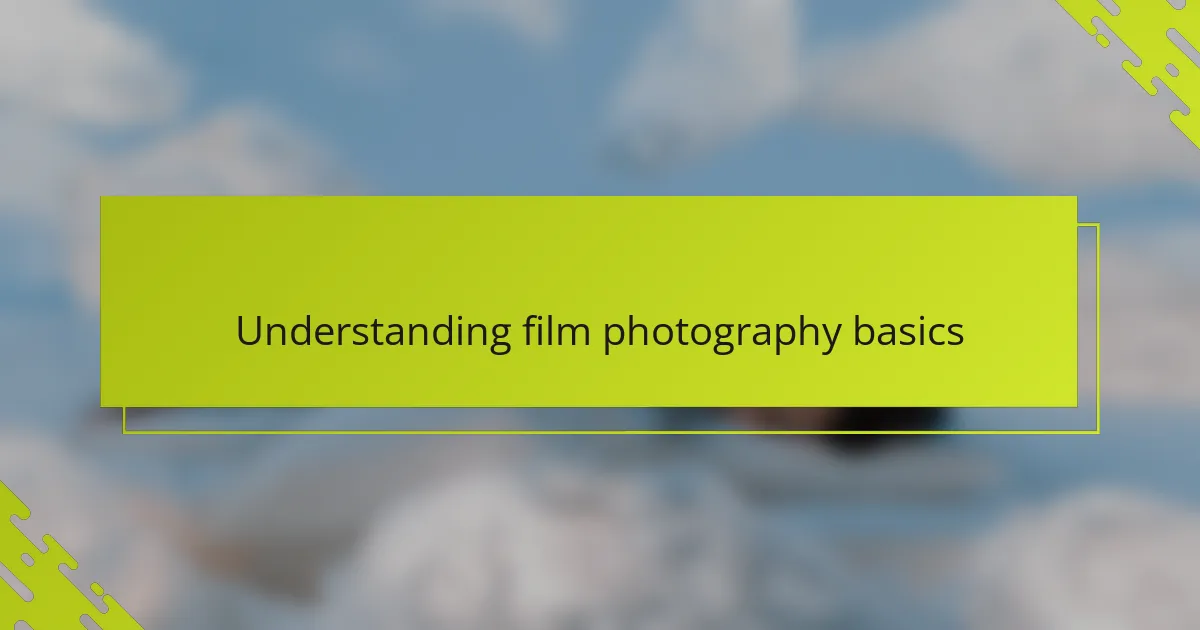
Understanding film photography basics
Film photography starts with understanding the fundamental relationship between light, shutter speed, aperture, and film ISO. When I first picked up a manual camera, I was surprised by how tactile the process felt—each adjustment changed the way my photo would turn out in ways I couldn’t immediately see but could definitely feel. Have you ever noticed how waiting for the perfect exposure can feel like breathing in sync with your camera?
Mastering these basics means learning to trust your intuition as much as the settings. I remember the thrill of finally getting a roll developed that matched what I pictured when I clicked the shutter—it taught me that patience and practice are just as crucial as technical knowledge. How often do we get to slow down this much in our fast-click digital world?
Grasping film’s sensitivity to light—ISO—is also eye-opening. It’s like understanding your camera’s personality and mood. Lower ISO films demand more light and deliver richer detail, while higher ISO films let you capture those spontaneous moments with grainy, textured beauty. Isn’t it fascinating how film’s limitations can open up new creative doors?
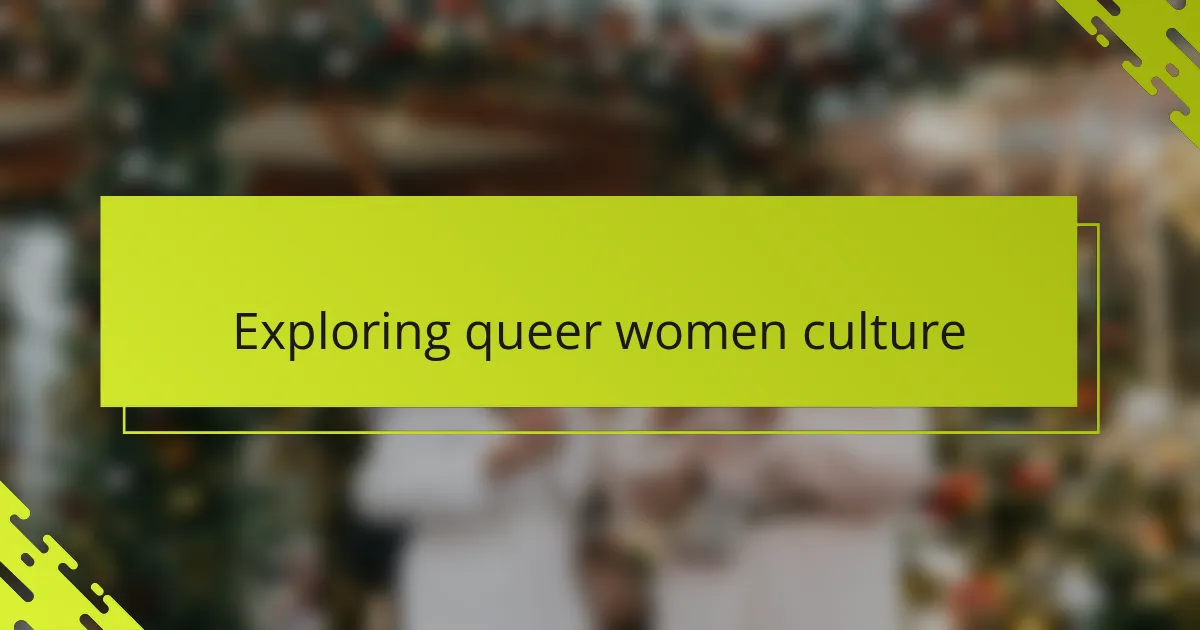
Exploring queer women culture
Queer women culture holds such a rich tapestry of stories and expressions that I find endlessly inspiring for my film photography. There’s something deeply powerful about capturing moments that reflect identity, resilience, and celebration all at once. Have you ever noticed how photographing someone who embraces their authentic self adds a kind of magic that goes beyond just the image?
When I photograph within queer women spaces, I feel an intimate connection that challenges me to go beyond surface-level portraits. It’s about respecting the nuances, the histories, and the vibrant community spirit that come alive in each frame. I remember once feeling nervous about asking for a portrait, but the openness I encountered turned that hesitation into a shared moment of trust and creativity.
Exploring queer women culture through my lens has taught me that every photograph is an act of acknowledging presence and visibility. It pushes me to listen more closely and see more clearly, reminding me that these images are more than art—they’re a testament to diverse identities thriving despite societal challenges. Isn’t that the real beauty of film photography, capturing not just a person but their story?

Tools for film photography
When I first assembled my film photography toolkit, the weight of that vintage camera in my hands felt almost sacred. Choosing the right camera—be it a classic 35mm or a medium format beauty—sets the tone for how you engage with your subject. Have you ever felt that moment when the shutter clicks and everything else fades, like it’s just you and the machine speaking?
Besides the camera itself, film choice quickly became a tool of emotional expression for me. Each roll has its own character—some more forgiving in low light, others bursting with bold colors or grain that seem to echo memories. I began to see selecting film almost like choosing a voice, asking myself: What mood do I want to capture before I even raise the camera?
Beyond these essentials, I’ve found that accessories like a trusty light meter and a sturdy tripod transform my shooting experience. They bring a level of control and calm that helps me slow down and really see my environment. Don’t you think that the right tools make the creative process feel less like guesswork and more like a meaningful ritual?

Techniques to improve film skills
One technique I’ve found invaluable is shooting consistently with different types of film and lighting conditions. It’s like having a dialogue with your camera—each roll tells you something new about how shadows fall or how colors shift. Have you ever been surprised by a photo that looked nothing like what you expected? That unpredictability keeps me curious and pushes me to experiment more boldly.
Practicing manual focus is another skill that I had to relearn and cherish over time. At first, it felt frustrating to miss sharpness, but gradually, I started appreciating how focusing manually makes me slow down and observe details I might have overlooked. Doesn’t it feel rewarding when that perfect focus, achieved purely by eye and touch, finally clicks into place?
Lastly, I always review developed prints with intention, not just as a checklist but as a way to understand my mistakes and successes. Holding a tangible photo lets me connect deeply with what worked—the light, composition, or moment captured—and what didn’t quite hit the mark. How often do we get the chance to learn so directly from the physical results of our craft? For me, this reflection fuels growth more than any digital preview ever could.
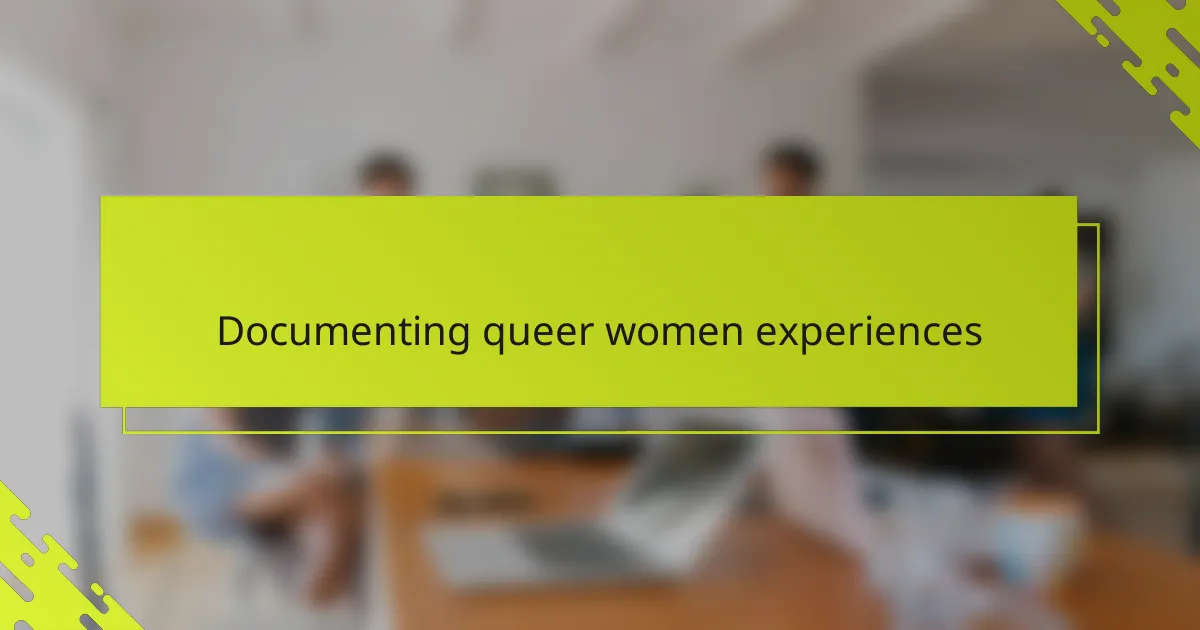
Documenting queer women experiences
Photographing queer women’s experiences has taught me that each frame carries a weight beyond aesthetics—it’s about honoring stories often overlooked. I recall a shoot where the subject’s quiet strength transformed a simple portrait into a testament of resilience, making me realize how film’s texture adds depth to those lived realities. Have you ever felt a photograph hold a story so vividly that it stays with you long after the shutter clicks?
Capturing these moments requires sensitivity and trust, especially in spaces where visibility isn’t always guaranteed. I’ve learned that approaching my subjects with genuine curiosity and respect opens doors to authenticity, turning strangers into collaborators in storytelling. Isn’t it remarkable how shared vulnerability through the lens can build an unspoken connection?
Film photography’s deliberate pace also invites me to witness queer experiences more mindfully. Waiting for the right light or the perfect pause means slowing down in a fast-moving world, offering space to appreciate the layers of identity visible in every gesture and expression. Have you noticed how slowing down this way allows you to see people, not just as subjects, but as whole stories unfolding?
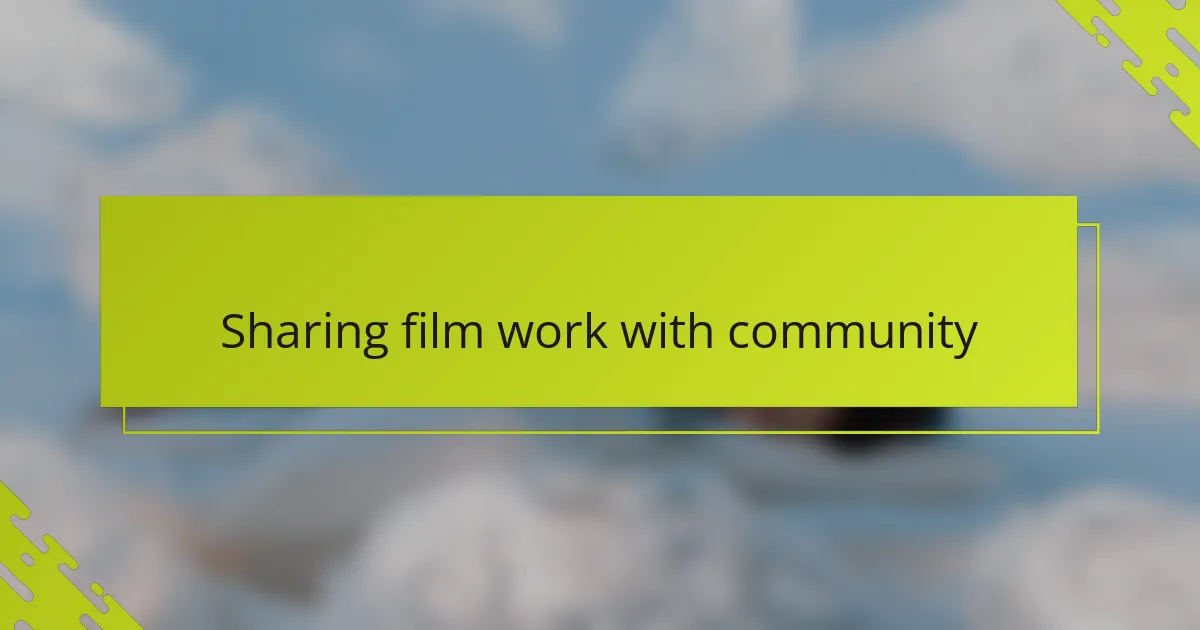
Sharing film work with community
Sharing my film work with the community feels like passing around a tangible piece of memory—each developed print invites conversation beyond likes and comments. Have you ever handed someone a photo and watched their face soften or light up? That moment of shared connection always reminds me why I choose film over digital.
I find that community feedback is invaluable; it’s in those exchanges that my own perspective deepens. After a local gallery night where I showed my portraits of queer women from a recent shoot, someone told me the images made them feel seen in a way words couldn’t capture. It hit me then how film’s texture carries an emotional weight that resonates beyond the frame.
Sharing also means vulnerability, and that can be challenging. But when I present my work to a group that understands the importance of representation, there’s a mutual respect that fosters growth—for both my art and my understanding of the stories I aim to tell. Isn’t it incredible how a simple photograph can open doors to empathy and dialogue within a community?
